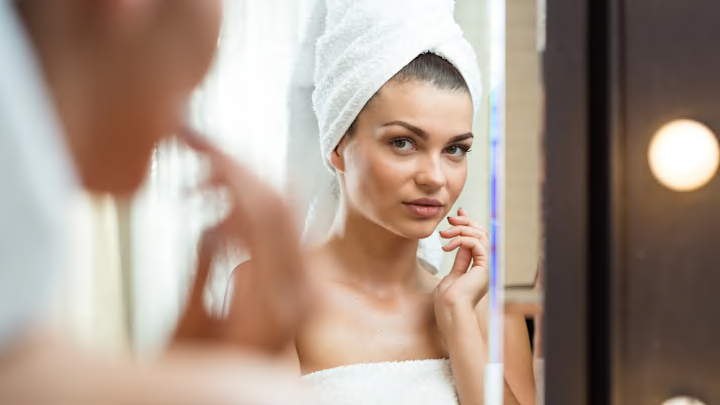Loving My Face in Every Light

There’s a certain kind of intimacy that comes from seeing your face under different lights—sunlight slanting through morning windows, the harsh honesty of office fluorescents, the warm blur of golden hour, the unforgiving front-facing camera glow. Each one tells a different story, casts a new version of you, and for a long time, I thought only one of them was the “right” one.
When Reflection Becomes Judgement
For most of my life, mirrors felt more like courtrooms than companions. I’d catch my reflection and instantly conduct a mental critique—cheeks too round, shadows under eyes too dark, smile asymmetrical. The lighting became a weapon. Overhead lighting? Unforgiving. Side lighting? Almost acceptable. Candlelight? Finally, a truce.
It took years to realize that this obsession with “finding my angle” wasn’t about aesthetics—it was about approval. Whose gaze was I trying to satisfy? Certainly not my own. I had internalized a myth that beauty was static and fragile, only available under the most curated conditions. Anything less than perfect light meant I was less than beautiful.
Rewriting the Lighting Script
The shift began not with skincare, makeup, or even therapy (though all had their parts to play). It started with curiosity. What if I didn’t flinch in the hallway mirror? What if I met my reflection with interest, not criticism?
I began to notice how dramatically my perception changed based on lighting, and rather than try to control it, I let it be part of the narrative. Some days my under-eye circles tell the story of late-night creativity or early-morning parenting. Other times, the way light falls on my cheekbones makes me feel like a Renaissance painting. Both are real. Both are me.
The Relationship Between Light and Self-Acceptance
Learning to love my face in every light isn’t about pretending every angle is my favorite—it’s about refusing to let lighting dictate my worth. When I started seeing my face as something dynamic, always in conversation with the world around me, I stopped chasing the impossible goal of being photogenic at all times.
This shift rippled outward. I took more unfiltered photos. I stopped hovering near the “good light” in group pictures. I began showing up to video calls without adjusting my screen brightness like a director on set. Slowly, gently, I unlearned the need for every moment to be flattering.
Seeing Yourself as Whole
Light reveals, but it also distorts. The face you see in a car mirror at noon isn’t more true than the one lit by fairy lights at night—it’s just different. And that’s the key: each version is a slice of you, but none of them tell the whole story.
Real self-love is about integrating all those slices. It’s choosing not to flinch when you pass your reflection in an unexpected place. It’s appreciating the laugh lines that show up only in sunlight, the slight asymmetries that are completely invisible in candlelight. It’s recognizing that your face, in any light, is still yours—and that’s where its power lies.
A Face I Come Home To
These days, I still have favorite lights. I’m human. But I no longer let the “bad” lighting define my beauty—or worse, my mood. My face is no longer a performance piece under stage lights. It’s a home I’ve learned to live in, whether it’s bathed in morning rays, shadowed by rain, or pixelated on a webcam.
The most beautiful kind of light? The one that lets me see myself clearly, honestly, and with a little grace.